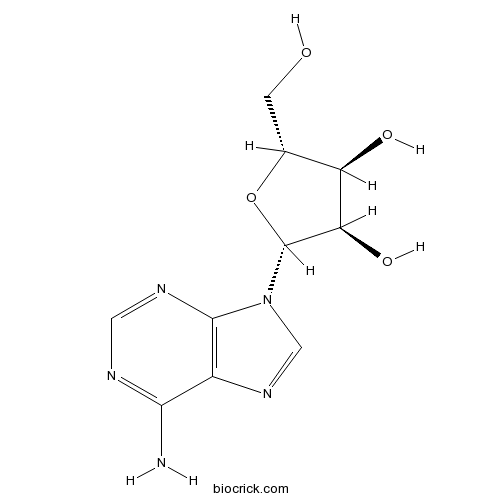Achnatherum inebrians
Achnatherum inebrians
1. The products in our compound library are selected from thousands of unique natural products; 2. It has the characteristics of diverse structure, diverse sources and wide coverage of activities; 3. Provide information on the activity of products from major journals, patents and research reports around the world, providing theoretical direction and research basis for further research and screening; 4. Free combination according to the type, source, target and disease of natural product; 5. The compound powder is placed in a covered tube and then discharged into a 10 x 10 cryostat; 6. Transport in ice pack or dry ice pack. Please store it at -20 °C as soon as possible after receiving the product, and use it as soon as possible after opening.
Natural products/compounds from Achnatherum inebrians
- Cat.No. Product Name CAS Number COA
-
BCN5796
Adenosine58-61-7
Instructions

Effect of Epichloë gansuensis Endophyte on the Nitrogen Metabolism, Nitrogen Use Efficiency, and Stoichiometry of Achnatherum inebrians under Nitrogen Limitation.[Pubmed: 29648822]
None
Modification of Susceptible and Toxic Herbs on Grassland Disease.[Pubmed: 27633060]
Recent research shows that continuous overgrazing not only causes grassland biodiversity to decline, but also causes light fungal disease. Achnatherum inebrians is susceptible to fungal diseases and increases in prevalence during over grazing due its toxicity to livestock. This study aimed to examine the effects of A. inebrians on biological control organisms and levels of plant diseases in overgrazed grasslands in northwestern China. The results showed that A. inebrians plants were seriously infected by fungal diseases and that this led to a high incidence of the mycoparasitic species Ampelomyces quisqualis and Sphaerellopsis filum. In addition, the fungivore, Aleocharinae, was found only in the soil growing A. inebrians rather than in the overgrazed area without A. inebrians. Overall, in an overgrazed grassland fenced for one year, disease levels in blocks without A. inebrians were significantly higher than those in blocks with A. inebrians. Our findings indicated that the disease susceptible, toxic A. inebrians can help control plant disease levels in overgrazed grasslands.
A toxic endophyte-infected grass helps reverse degradation and loss of biodiversity of over-grazed grasslands in northwest China.[Pubmed: 26679518]
Overgrazing of China's grasslands is increasingly causing biodiversity to decline. In degenerated grasslands of northwest China endophyte (Epichloё gansuensis) infected Achnatherum inebrians (drunken horse grass) is becoming widely distributed because of its toxicity to livestock. In this study, we investigated the ecological consequences of endophyte toxicity in this native grass, at three sites in northwest China, by comparing seed production of plant species and arthropod abundance in overgrazed grasslands with and without the presence of A. inebrians. Our findings demonstrate that the presence of endophyte infected A. inebrians reduces the loss of plant and arthropod biodiversity by providing a protected nursery free of animal grazing. Therefore, A. inebrians, typically regarded as an unwanted toxic invader by pastoralists, should be viewed as beneficial for grasslands as its presence maintains plant and arthropod biodiversity, and provides a foundation stone in the reconstruction and restoration of these grassland ecosystems.
Two distinct Epichloë species symbiotic with Achnatherum inebrians, drunken horse grass.[Pubmed: 25911697]
Achnatherum inebrians, colloquially known as drunken horse grass, is associated with livestock toxicity in northern China. Epichloë gansuensis (Eg) was described from endophyte isolates from A. inebrians in Sunan County, Gansu Province, whereas a morphologically distinct variety, E. gansuensis var. inebrians (Ei), was described based on two isolates from A. inebrians seeds collected in Urumqi County, Xinjiang Province. Genome sequencing and alkaloid analyses also distinguish these taxa; the Ei isolates produce neurotropic lysergic acid amides (ergot alkaloids), and an Eg isolate produces paxilline (an indole-diterpene alkaloid). To better elucidate the taxonomic diversity of Epichloë spp. symbiotic with A. inebrians, we surveyed eight populations in Xinjiang, Gansu and Inner Mongolia provinces of China and analyzed their genotypes by multiplex PCR for alkaloid biosynthesis genes and mating-type genes. Genotypes consistent with Ei were present in all eight populations, of which they dominated seven. The Ei isolates were all mating type A and tested positive for the ergot alkaloid gene, dmaW. In contrast Eg isolates were all mating type B and had the indole-diterpene gene, idtG. The genome was sequenced from an Ei isolate from seeds collected in Xiahe County, Gansu, and compared to that of the varietal ex type isolate from Urumqi. Alkaloid genes and four different housekeeping genes were nearly identical between the two sequenced Ei isolates and were distinct from a sequenced Eg isolate. Phylogenetic analysis placed Ei, Eg and Epichloë sibirica into respective subclades of a clade that emanated from the base of the Epichloë phylogeny. Given its chemotypic, genotypic, morphological and phylogenetic distinctiveness, its widespread occurrence in rangelands of northern China, and its importance in livestock toxicity, we propose raising Ei to species rank as Epichloë inebrians.
Cytotoxic effect of ergot alkaloids in Achnatherum inebrians infected by the Neotyphodium gansuense endophyte.[Pubmed: 24851700]
Ergonovine or ergonovinine was isolated from the aerial parts of endophyte (Neotyphodium gansuense) infected (E+) drunken horse grass (Achnatherum inebrians), neither of which existed in endophyte-free (E-) plants. Both of these ergot alkaloids had a cytotoxic effect on animal smooth muscle cells and increased cell growth inhibition with greater concentrations, in a significantly (P < 0.05) positive correlation. The median inhibitory concentrations (IC50) for ergonovine and ergonovinine were 71.95 and 72.75 μg/mL, respectively. These results indicate that endophytic ergot alkaloids may be the cause of drunken horse grass poisoning.


